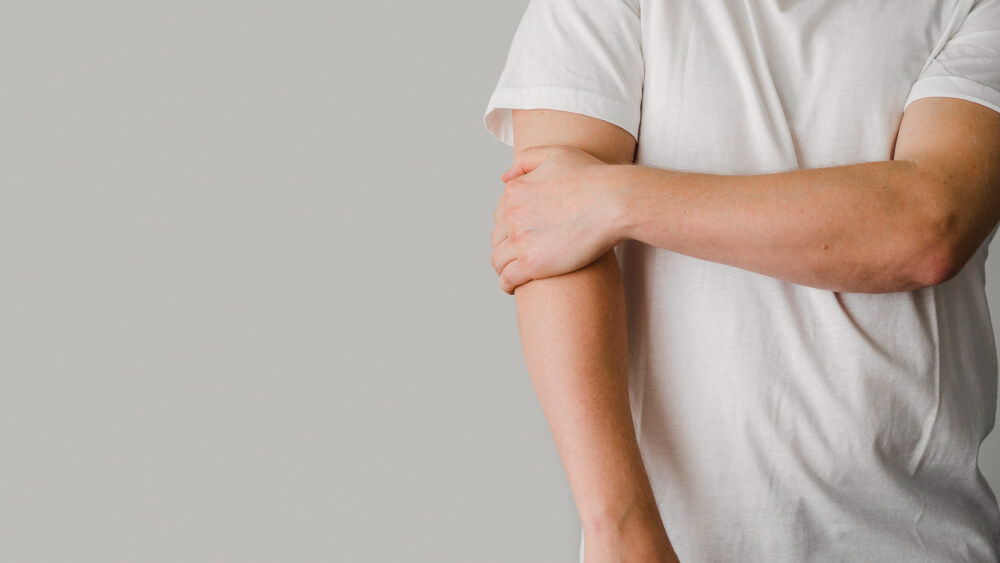Don’t Just Rest It: Effective Treatment Options for Elbow Pain with Your Orthopedic Surgeon
The elbow joint, a hinge-like wonder, allows us to perform a wide range of activities, from lifting a cup of coffee to throwing a baseball. But with this remarkable function comes vulnerability to pain and injury. Elbow pain is a common complaint, affecting people of all ages and activity levels. While “tennis elbow” is a frequently mentioned culprit, the spectrum of elbow pain can be much broader. This guide delves into the world of elbow care, exploring the expertise of orthopedic surgeons in helping you achieve a pain-free, functional elbow.
Demystifying the Elbow: A Complex Joint in Action
The elbow joint is where the upper arm bone (humerus) meets the two bones of the forearm (radius and ulna). A network of muscles, ligaments, tendons, and bursae surrounds this joint, providing stability, flexibility, and smooth movement. This intricate collaboration allows us to bend and straighten our arm, rotate our forearm, and grip objects.
However, this complexity also makes the elbow susceptible to wear and tear, injuries, and imbalances. Repetitive motions, overuse, or direct trauma can disrupt this delicate balance, leading to pain and limitations in movement.
Beyond Tendonitis: A Spectrum of Elbow Pain Causes
“Tennis elbow” (lateral epicondylitis) is a common overuse injury affecting the tendons on the outer side of the elbow. However, it’s important to understand that various conditions can contribute to elbow pain. Here’s a glimpse at some of the culprits:
- Tendonitis: Inflammation of the tendons surrounding the elbow joint can cause pain, especially with activity. Common types include tennis elbow and golfer’s elbow (affecting the inner side of the elbow).
- Bursitis: Inflammation of the fluid-filled sacs cushioning the elbow joint can lead to pain, tenderness, and swelling.
- Arthritis: Degenerative changes in the cartilage lining the elbow joint can cause pain, stiffness, and reduced range of motion. This can be osteoarthritis (wear-and-tear) or rheumatoid arthritis (an autoimmune disease).
- Ligament Sprains or Tears: Overstretching or tearing of ligaments that stabilize the elbow joint can cause pain, instability, and bruising.
- Fractures: Falls or direct impacts can break bones in the elbow, including the humerus, ulna, or radius.
- Nerve Problems: Pinched nerves in the elbow can cause pain, numbness, tingling, and weakness in the arm and hand.
Unraveling the Mystery: The Diagnostic Process
Accurate diagnosis is essential for creating an effective treatment plan for elbow pain. Your orthopedic surgeon will use a combination of approaches to pinpoint the cause of your discomfort. Here’s what you can expect:
- Detailed Medical History: Your doctor will discuss your symptoms, including their onset, severity, location, and any aggravating or relieving factors. They will also inquire about your medical history and any past injuries related to your elbow.
- Physical Examination: A thorough physical examination will assess your elbow’s range of motion, tenderness, strength, and stability. Special tests may be performed to pinpoint specific structures causing pain.
- Imaging Tests: X-rays, MRIs, or ultrasounds may be ordered to visualize bones, soft tissues, and the joint in detail, helping to confirm the diagnosis.
In some cases, additional tests like nerve conduction studies or a diagnostic injection may be needed depending on the suspected cause of your elbow pain.
Charting Your Path to Recovery: Treatment Options
Once the source of your elbow pain is identified, your orthopedic surgeon will work with you to develop a personalized treatment plan. The goal is to address the underlying problem, alleviate pain, improve function, and prevent future complications. Treatment options can range from conservative approaches to surgical intervention, depending on the severity and nature of your condition. Here are some possibilities:
- Non-surgical Treatment:
- Rest, Ice, Compression, and Elevation (RICE): This fundamental approach helps reduce inflammation and swelling in the early stages of injury.
- Physical Therapy: Rehabilitation exercises play a crucial role in strengthening muscles, improving flexibility, and restoring proper mechanics around the elbow joint.
- Medication: Pain relievers, anti-inflammatory drugs, or cortisone injections may be used to manage pain and inflammation.
- Bracing or Splinting: Immobilization may be recommended for a short period to allow healing or protect the joint during therapy.
- Surgical Intervention:
- Arthroscopy: A minimally invasive procedure using a small camera to visualize the inside of the joint and repair damage such as torn ligaments or remove inflamed bursa tissue.
- Open surgery: For more complex cases, traditional open surgery may be necessary to address severe ligament tears, fractures, or advanced arthritis.


